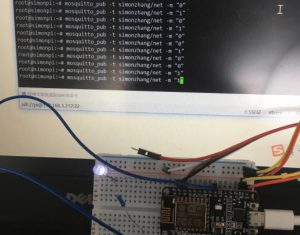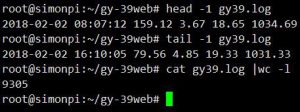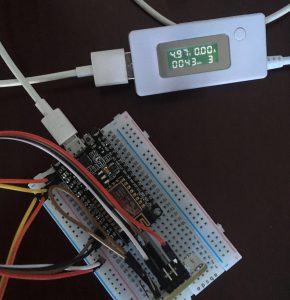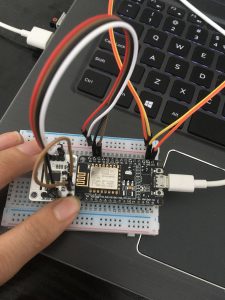#!/bin/env python3
#-*- coding:utf-8 -*-
import tornado.ioloop
import tornado.locale
import tornado.web
import hashlib
class checkHandler(tornado.web.RequestHandler):
def get(self):
signature = self.get_argument('signature')
timestamp = self.get_argument('timestamp')
nonce = self.get_argument('nonce')
echostr = self.get_argument('echostr')
token = 'xxxxxxx'
list1 = [token, timestamp, nonce]
list1.sort()
strList = ''.join(list1)
sha1 = hashlib.sha1()
sha1.update(strList.encode('utf-8'))
if sha1.hexdigest() == signature:
self.write(echostr)
else:
self.write('')
Category Archives: python备忘
python编译为可执行文件
http://nuitka.net
http://www.pyinstaller.org
推荐使用pyinstaller
安装加密模块
pip install PyCrypto
安装加壳工具
yum install upx
找到upx位置
#whereis upx
#upx: /usr/bin/upx /usr/share/man/man1/upx.1.gz
# pyinstaller -F –key !@#$%^&*gew –upx-dir /usr/bin/upx –clean test.py
编译测试,keys为pyc加密使用。
python 查看当日是本年第几周、本年天、季度
>>> import datetime
>>> datetime.datetime.now().isocalendar()
(2018, 14, 7)
#返回结果是(年号,第几周,第几天)
>>> (int(datetime.datetime.now().strftime(“%m”))-1)//3+1
2
#返回结果是当日的季度
>>> (int(datetime.date(2014,8,15).strftime(“%m”))-1)//3+1
3
#返回制定日期的季度
esp8266连接mqtt服务订阅消息、接收推送
raspberry pi上安装mqtt服务器。
apt-get update
apt-get install mosquitto
apt-get install mosquitto mosquitto-clients python-mosquitto
apt-get install python-mosquitto
启动mqtt服务
mosquitto
检查mqtt服务是否启动。默认1883端口。
netstat -antp
结果
tcp 0 0 0.0.0.0:1883 0.0.0.0:* LISTEN 383/mosquitto
查看服务器详细信息命令
/etc/init.d/mosquitto status
esp8266源码
# -*- coding:utf-8 -*-
import network
from mqtt import MQTTClient
import machine
import time
# 连接WIFi
sta_if = network.WLAN(network.STA_IF); sta_if.active(True)
#sta_if.scan()
sta_if.connect("SID", "密码")
while not sta_if.isconnected():
machine.idle()
# 根据订阅内容开关灯
def sub_cb(topic, msg):
if int(msg) == 0:
machine.Pin(int(12), machine.Pin.OUT, value=0)
elif int(msg) == 1:
machine.Pin(int(12), machine.Pin.OUT, value=1)
# 连接mqtt服务器
client = MQTTClient(client_id="1", server="192.168.1.212", port=1883)
client.set_callback(sub_cb)
client.connect()
# 循环获取内容
while True:
client.subscribe(topic="simonzhang/net")
time.sleep(0.5)
esp8266的mqtt lib地址如下。将mqtt.py和主文件命名为main.py上传到esp8266。
https://github.com/simon-zzm/ESP8266-lib/blob/master/mqtt.py
重启esp8266,在raspberry pi上推送消息控制灯开关成功。
开灯
mosquitto_pub -t simonzhang/net -m “1”
关灯
mosquitto_pub -t simonzhang/net -m “0”

其它记录
命令行
mosquitto_sub -t simonzhang/net
-t 指定订阅主体(topic),主体不用提前设定,直接发布就行。
mosquitto_pub -t simonzhang/net -m “Hello, simonzhang!”
-m 为发送内容
订阅名称可以用 + 代替,例如:
simon/+/zhang/+
这样就可以推送,“simon/hello/zhang/led”的主体。
#号应用于主体的结尾,例如:
simon/hello/zhang/led#
需要研究的还有通讯加密,程序加密和耗能部分。
ESP8266 python3 直接使用 gy-39 传感器
gy-39放在raspberry移动不太方便,耗电量也大,只为收集数据有点浪费,直接用esp8266。
ESP8266也烧成python环境。省略配置wifi部分。
将附件中lib上传,ESP8266的lib与rasbperry不同。
ESP8266接口图。
板子上的D1和D2对应的是ESP8266上的4,5脚,连接如图。
到ESP8266查看硬件连接
>>> from machine import Pin, I2C
>>> i2c = I2C(scl=Pin(5), sda=Pin(4))
>>> i2c.scan()
[74, 118]
转换十六进制算一下,两个传感器已经都认到了,文档在raspberry pi连接GY-39文档中。
查看上传文件
>>> import os
>>> os.listdir()
[‘boot.py’, ‘bme280.py’, ‘max44009.py’]
测试传感器数据
>>> import machine
>>> import bme280
>>> i2c = machine.I2C(scl=machine.Pin(5), sda=machine.Pin(4))
>>> bme = bme280.BME280(i2c=i2c)
>>> print(bme.values)
(‘20.73C’, ‘1020.55hPa’, ‘24.31%’)
>>> import max44009
>>> lum = max44009.MAX44009()
>>> print(lum.luminosity())
3.06
一切正常。
在raspberry pi上做个简单http接口收集数据,代码如下:
import tornado.ioloop
import tornado.web
import time
def getNowTime():
return time.strftime('%Y-%m-%d %T',time.localtime(time.time()))
class MainHandler(tornado.web.RequestHandler):
def get(self):
#try:
lum = self.get_argument("lum")
hum = self.get_argument("hum")
temp = self.get_argument("temp")
press = self.get_argument("press")
f = open("./gy39.log", "a")
tmpData = "%s %s %s %s %s\n" % (getNowTime(), lum, hum, temp, press)
f.write(tmpData)
f.close()
#except:
# pass
self.write("ok")
application = tornado.web.Application([
(r"/", MainHandler),
])
if __name__ == "__main__":
application.listen(9999)
tornado.ioloop.IOLoop.instance().start()
ESP8266的调用传感器代码
#!/usr/bin/env python3
# -*- coding:utf-8 -*-
# Revision:
# Author: simonzhang
# Email: simon-zzm@163.com
# Web: www.simonzhang.net
# -------------------------------
# http://192.168.3.212:9999/?lum=12&hum=3.43&temp=23423&press=12132
class timegy30():
def run():
import machine
#
import bme280
i2c = machine.I2C(scl=machine.Pin(5), sda=machine.Pin(4))
bme = bme280.BME280(i2c=i2c)
temp = bme.values[0][:-1]
press = bme.values[1][:-3]
hum = bme.values[2][:-1]
#
import max44009
lum = max44009.MAX44009()
lum = lum.luminosity()
url = "http://192.168.3.212:9999/?lum=%s&hum=%s&temp=%s&press=%s" % \
(lum, hum, temp, press)
#
import urequests
urequests.get(url)
ESP8266启动调用定时器,代码main.py。
from machine import Timer
tim = Timer(1)
def func(t):
import timetask
timetask.timegy30.run()
tim.init(period=3000, mode=Timer.PERIODIC, callback=func)
raspberry日志上看跑了8个多小时,收集9千多次,应该是没有丢的情况,因为中间断了一小会。

电量使用43mha,每小时是5.3MHA。

充电宝3.7v 1800MHA电芯是10块左右。接在这板子上按照3秒测试、发送一次的速度是不能用15天。如果是5分钟发一次,是不是能用150天,电池这部分我不确定,我这个也没有稳压板。我这测试好像比网上测试的耗电量都低。
后续如果优化应该有3部分。
1)cpu频率按照计算量降到最低。
2)关闭没有用的端口。
3)优化代码,设计睡眠模式。
ESP8266的看门狗和自动重启结合使用防止宕机。
使用功能mqtt进行收发,此芯片用在物联网上相当不错。

